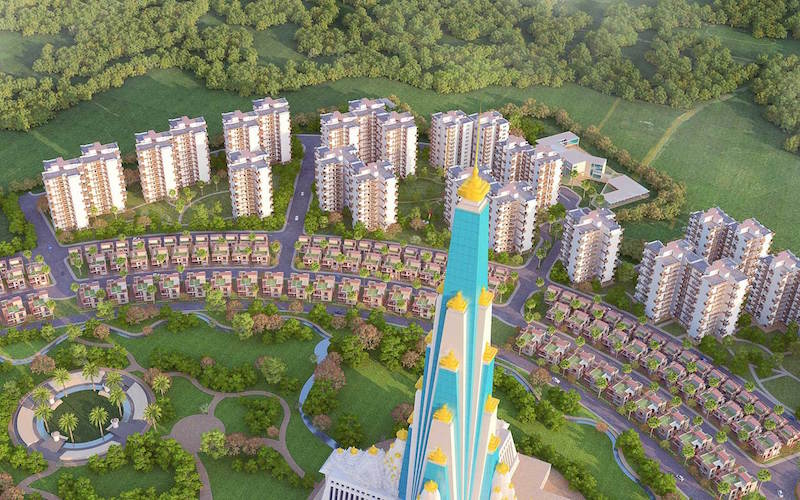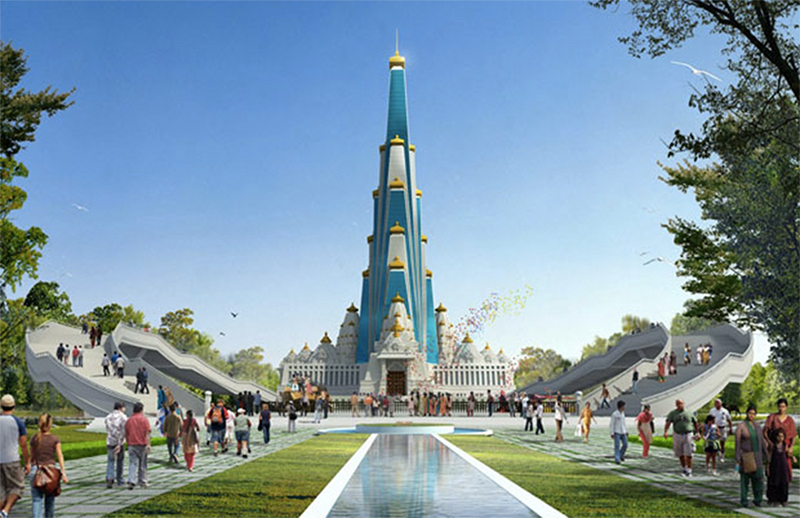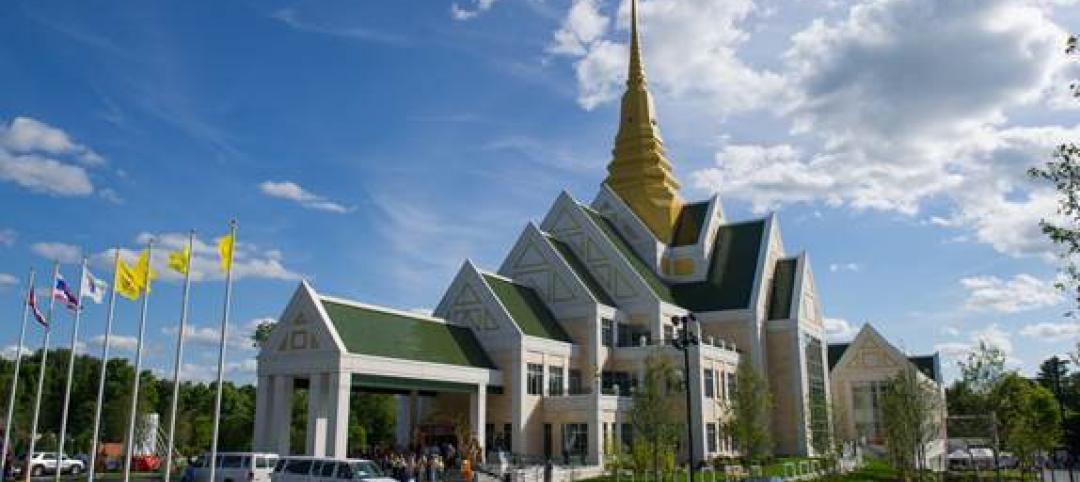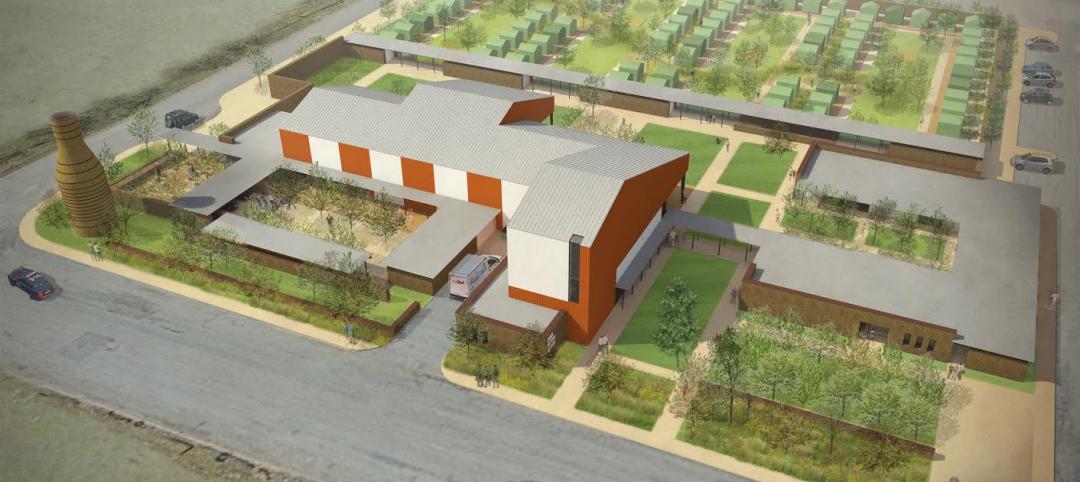A new Hindu temple, named “Vrindavan Chandrodaya Mandir” and dedicated to the Hindu deity Lord Sri Krishna, is under construction in Uttar Pradesh, India. Once completed, it will become the tallest religious structure in the world. The building, designed by the Indian firm InGenious Studio, will stand 700-feet-tall and rise 70 tiered stories, Arch Daily reports.
The structure will not only be impressive in its height, but also in its footprint, as the earthquake-resistant building will cover an area larger than St Peter’s Basilica in Vatican City. Housed within the structure will be a variety of religious and cultural facilities along with the much less obvious addition of a theme park, complete with attractions such as park rides, animatronics, and laser shows.
The temple will be the focal point of a surrounding social and residential development. The social and residential facilities will be set into a 30 acre forested area meant to recreate the 12 forests of Braj.
Construction is in the early stages as most of the current work is focused on the building’s 180-foot-deep foundation.
 Rendering courtesy of InGenious Studio
Rendering courtesy of InGenious Studio
 Rendering courtesy of InGenious Studio
Rendering courtesy of InGenious Studio
Related Stories
| Jun 17, 2014
Nation's largest Thai Buddhist temple opens near Boston
The $60 million facility built in honor of King Rama IX of Thailand is the largest Thai Buddhist temple outside of Thailand.
| Jun 12, 2014
Austrian university develops 'inflatable' concrete dome method
Constructing a concrete dome is a costly process, but this may change soon. A team from the Vienna University of Technology has developed a method that allows concrete domes to form with the use of air and steel cables instead of expensive, timber supporting structures.
| Jun 10, 2014
Gaudi’s famed cathedral on ice: Dutch students to construct 132-foot ice replica of Sagrada Familia
"Sagrada Familia in Ice" will be built with a mixture of wooden fibers and plain ice that is three times stronger than ice.
| May 29, 2014
7 cost-effective ways to make U.S. infrastructure more resilient
Moving critical elements to higher ground and designing for longer lifespans are just some of the ways cities and governments can make infrastructure more resilient to natural disasters and climate change, writes Richard Cavallaro, President of Skanska USA Civil.
| May 20, 2014
Kinetic Architecture: New book explores innovations in active façades
The book, co-authored by Arup's Russell Fortmeyer, illustrates the various ways architects, consultants, and engineers approach energy and comfort by manipulating air, water, and light through the layers of passive and active building envelope systems.
| May 19, 2014
What can architects learn from nature’s 3.8 billion years of experience?
In a new report, HOK and Biomimicry 3.8 partnered to study how lessons from the temperate broadleaf forest biome, which houses many of the world’s largest population centers, can inform the design of the built environment.
| May 13, 2014
19 industry groups team to promote resilient planning and building materials
The industry associations, with more than 700,000 members generating almost $1 trillion in GDP, have issued a joint statement on resilience, pushing design and building solutions for disaster mitigation.
| May 12, 2014
Lubbock, Texas, to build modern 'tent city' as shelter for homeless
On the five-acre site of a former cotton gin, the High Cotton program provides temporary shelter for Lubbock's homeless population. The facility needs to expand due to increased need, and new plans have been drawn up.
| May 11, 2014
Final call for entries: 2014 Giants 300 survey
BD+C's 2014 Giants 300 survey forms are due Wednesday, May 21. Survey results will be published in our July 2014 issue. The annual Giants 300 Report ranks the top AEC firms in commercial construction, by revenue.
| Apr 29, 2014
USGBC launches real-time green building data dashboard
The online data visualization resource highlights green building data for each state and Washington, D.C.

















